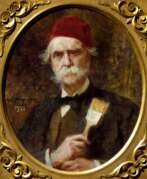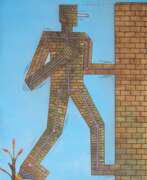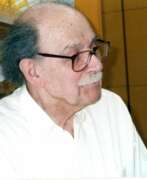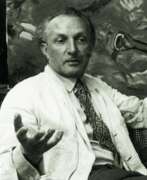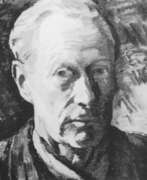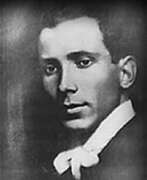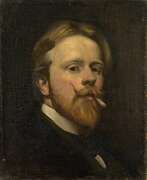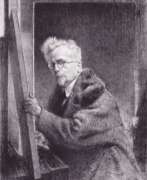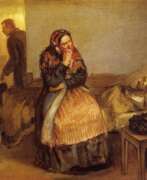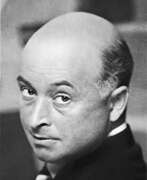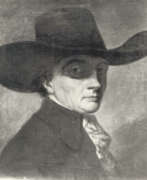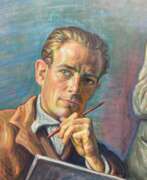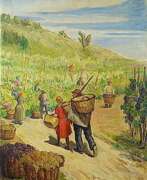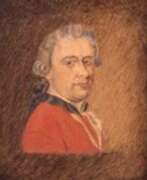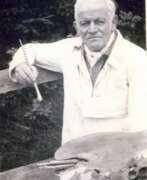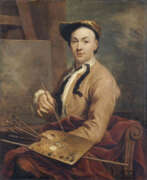Cartoonists Self-portrait
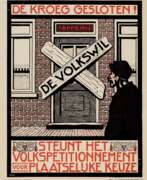

Albert Pieter Hahn was a Dutch political cartoonist, poster artist and book cover designer; well known for his socialist and antimilitaristic viewpoints. Some of his drawings, especially those of the railroad strikes of 1903, have been regularly used in history textbooks. His son-in-law, Albert Hahn jr., was also an artist, so he is sometimes referred to as "Sr.".
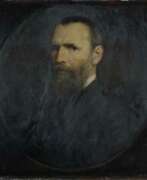

Edmund Harburger was a German artist of the last third of the nineteenth and early twentieth centuries. He is known as a painter, graphic artist, illustrator, and caricaturist.
Harburger became famous for more than 1,500 humorous drawings for the magazine Fliegende Blätter. He also created book illustrations and political cartoons. After living for two years in Venice, the artist practiced there copying the works of the old masters. His exhibitions were held in various European cities, including Paris, Berlin and Munich. His works are kept in museums in various countries, including the New Pinakothek in Munich and museums in Gdansk, Leipzig, Prague and other cities.
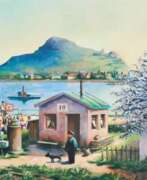

Otto Nückel was a German painter, graphic designer, illustrator and cartoonist. He is best known as one of the 20th century's pioneer wordless novelists, along with Frans Masereel and Lynd Ward. He developed his skill in drawing and painting, joining the artists' association, the Munich Sezession, and developing an interest in relief printing. Because of the scarcity of wood, Nückel made engravings for relief prints on lead plates. A pioneer in lead engraving, Nückel developed an accomplished mastery of this medium, distinguished by ample use of the multiple-line tool. Much of Nückel's work favors dark comedy, profound irony and an often scathing sarcasm.


Aleksander Orłowski (Russian: Александр Осипович Орловский), a renowned Polish painter and sketch artist, was born on March 9, 1777, in Warsaw, within the Polish-Lithuanian Commonwealth. His journey into the arts began under challenging circumstances; he was the son of a tavern-keeper and his family was not wealthy. His early promise in art was nurtured by noble patron Izabela Czartoryska, who financed his initial education under the guidance of artist Jan Piotr Norblin.
Orłowski's artistic journey intersected with his military service during the Kościuszko Uprising, a major revolt against Imperial Russia and Prussia in 1794. This period of conflict significantly influenced his later works, which often depicted military scenes and the daily life of soldiers. After the partitions of Poland, Orłowski moved to Saint Petersburg in 1802, where he became a seminal figure in the development of lithography in the Russian Empire.
His oeuvre includes a wide array of subjects, from battle scenes to cultural depictions of everyday life in both Poland and Russia. Notable works such as "Battle Scene" and "Cossack Fighting Off A Tiger" showcase his skill in capturing dynamic movement and drama. His works are preserved in esteemed institutions such as The Russian Museum and The Tretyakov Gallery, highlighting their historical and artistic value.
Orłowski's impact extended beyond the canvas; he was also mentioned in literary works by notable authors like Adam Mickiewicz and Alexander Pushkin, which underscores his cultural significance in the 19th century.
For collectors and experts in art and antiques, Aleksander Orłowski's works represent a crucial segment of Eastern European art history. To stay informed about new discoveries or auction events related to his works, consider subscribing for updates. This subscription ensures you receive timely information tailored to your interests, directly relating to new sales and significant events around Orłowski's art.
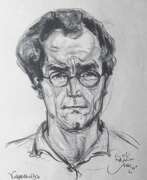

Emil Wilhelm Stumpp was a German painter, teacher, and artist known for his cartoons and drawings of well-known people in the 1930s during the Weimar Republic. He created portraits of many well known people including Bertold Brecht, Chancellor Friedrich Ebert, Thomas Mann. He was eventually commissioned to create a portrait of Adolf Hitler for his birthday in 1933. The work was not well received and the portrait, Stumpp, his paper (the General Anzeiger), and its editor were all prohibited. He left about 6,000 drawings which were all drawn from life.
